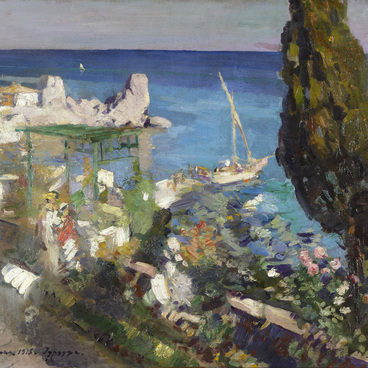One of the most remarkable landscape painters of the 18th century was Ivan Mikhailovich Tankov, whose career began in 1756, when, among twenty-five soldier’s children, he went to the City Office of St. Petersburg to study ‘carving craftsmanship’. Since 1757, Tankov has been studying painting with I. Ya. Vishnyakov, and after almost ten years he has received permission from the Chancellery to study in the drawing classes of the Imperial Academy of Arts. Around the same time, the artist took part in the design of theatrical performances taking place there, and in 1785, he was awarded the title of academician.
In the collection of the Yekaterinburg Museum, there are two paired landscapes of this artist. There is an assumption that they entered the museum of the Urals Society of Devotees of Natural Science in 1926 from the Kyshtym’s White House of L. I. Rastorguev, where they may have come from the St. Petersburg house of P. G. Demidov, the owner of the Kyshtym factories before 1809.
One of the landscapes depicts the estate of Peter Grigoryevich Demidov Sivoritsy near St. Petersburg. The canvas is a characteristic example of early Russian landscape painting, when the images of nature were not full-scale, but composed, and were called “depiction.” Against the background of a large manor house, a whole panorama of festivals unfolds of festivals organized by the author, games, and round dances, reminiscent of scenes played out on theatrical stages. Here the “merry” peasants lead a happy, idyllic life and are depicted next to their decorously walking lords.
The characters, as if carved from cardboard, they are combined into separate groups, neither compositionally nor picturesquely related. In the foreground, the artist placed feasting peasants, distinguished by greater conventionality and monochrome brown color - a clear borrowing from Dutch genre painting of the 17th century. Ivan Tankov, a painter of the “Office of Her Imperial Majesty”s Houses and Gardens”, a student of A. Perezinotti, combined elements of genre painting and the conventionality of decorative landscapes, originating from theatrical scenery.



